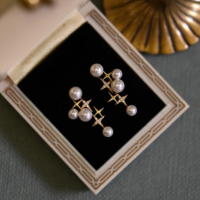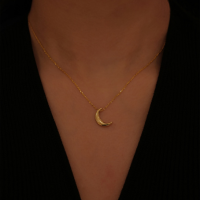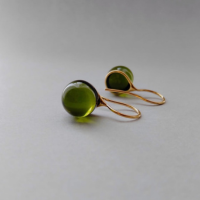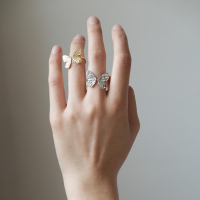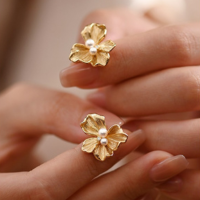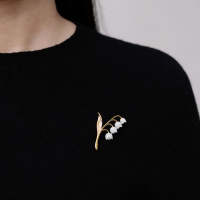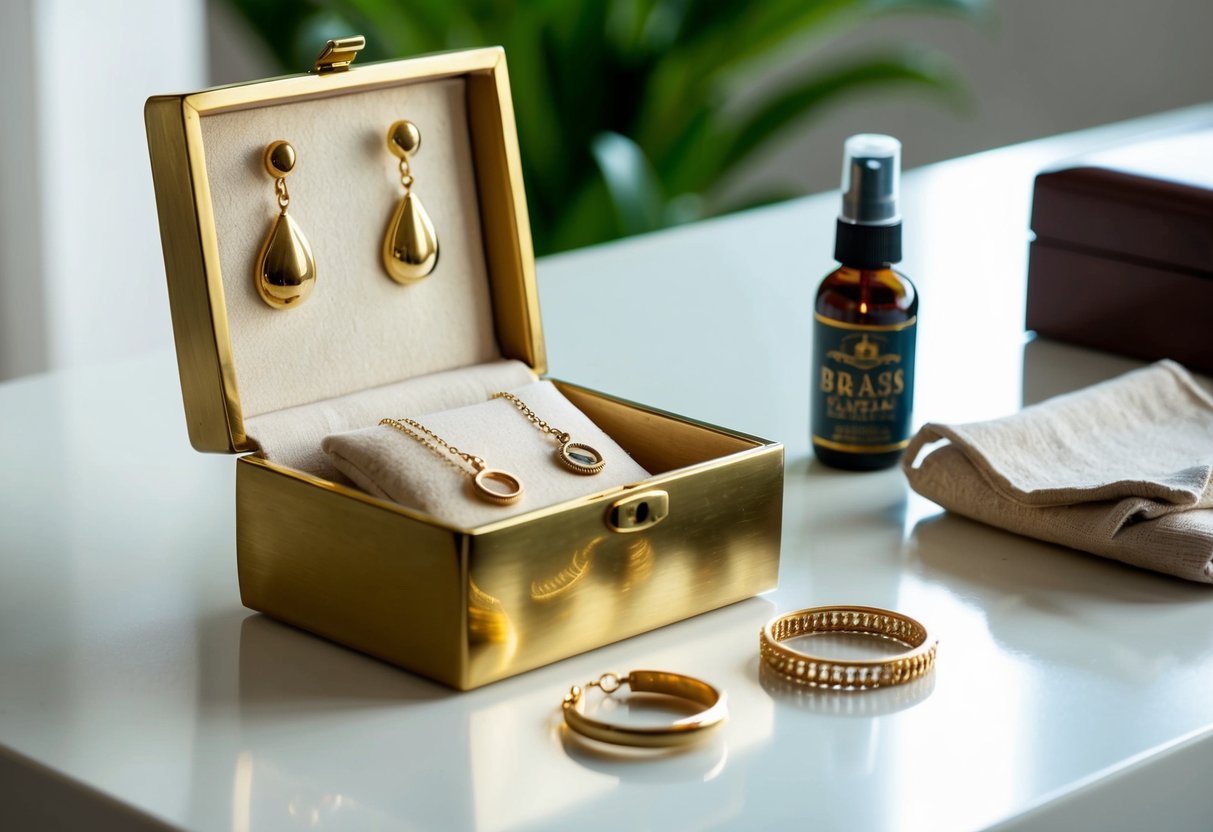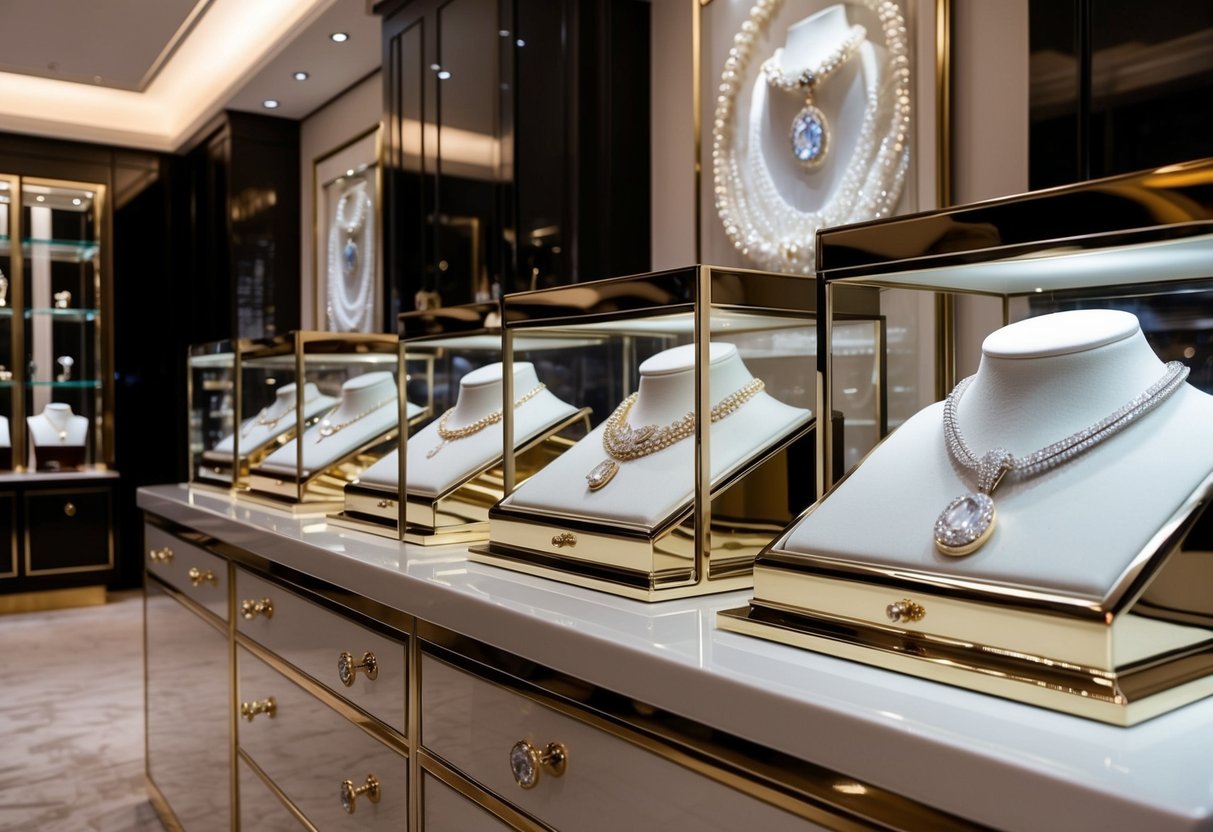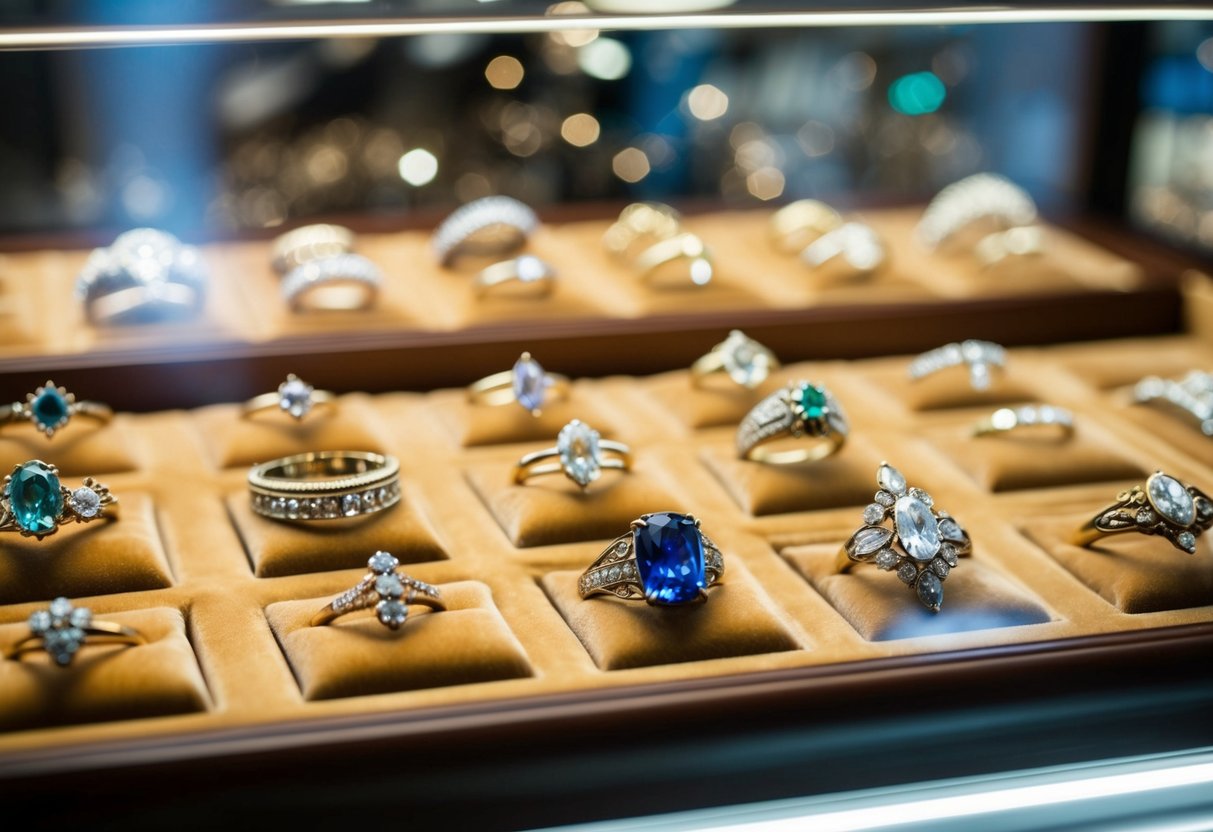
What is Estate Jewelry
Check out our personalized jewelry collections! (kids drawing jewelry, coin jewelry, wire jewelry, fingerprint jewelry, handwriting jewelry, and more)
When it comes to jewelry, many people have heard the term "estate jewelry" but aren't entirely clear about what it means. Estate jewelry refers to pieces that are previously owned and can be from any era. The key factor is that it's pre-owned, offering unique designs and often exceptional craftsmanship.
Estate jewelry has caught the interest of many collectors and fashion enthusiasts. We love it because it often comes with a story and history that new pieces lack. The charm of wearing something with a past can make estate jewelry very appealing.
Thinking about buying estate jewelry? It's important to understand its value and authenticity. Knowing how to care for these pieces properly ensures they remain beautiful and last for generations.
Key Takeaways
- Estate jewelry is pre-owned and can be from any era.
- It offers unique designs and history that new pieces may lack.
- Proper care is essential to maintain its beauty and value.
Defining Estate Jewelry
Estate jewelry is a treasure from the past with stories to tell. It often carries unique designs and craftsmanship not found in modern pieces. The terms associated with these items can be confusing, so it's important to know the differences.
Historical Value and Significance
Estate jewelry carries the charm and elegance of bygone eras. These pieces were crafted with precision and were often made with materials that are hard to find today. Each piece can reflect the art, culture, and lifestyle of its time.
Some estate jewelry even has historical ties or might have belonged to notable individuals. This can enhance both its value and its desirability. We often find that these pieces hold sentimental value too, as they are passed down through generations.
Estate Versus Vintage and Antique
The market labels jewelry in distinct categories: estate, vintage, and antique. Estate jewelry is any piece that is pre-owned, regardless of its age. Vintage refers to items over 20 years old and usually less than 100 years old.
Antique jewelry must be at least 100 years old. We see estate jewelry as a broad term that includes both vintage and antique pieces. Understanding these distinctions helps buyers make informed choices and appreciate the unique features of each category. Using these labels correctly can enhance our appreciation and knowledge of jewelry history.
Why People Choose Estate Jewelry
Estate jewelry offers distinctive designs crafted with care, often being collectible items that increase in value. Choosing estate pieces supports sustainability by preserving precious materials.
Unique Character and Craftsmanship
Estate jewelry boasts a distinct charm, thanks to its one-of-a-kind designs and quality craftsmanship. Unlike mass-produced modern pieces, these jewels often showcase unique features. This is especially appealing to those of us who appreciate originality.
The detailed work on estate jewelry reflects the time when artisans spent countless hours perfecting each piece. Across decades, various styles and influences are visible in estate jewelry, offering a glimpse into the past.
Many pieces tell stories, capturing the essence of a particular era. Wearing estate jewelry allows us to own a piece of history, giving our wardrobe character and depth that is hard to find in new designs.
Potential for Investment
Many people choose estate jewelry for its potential financial benefits. Over time, estate pieces can increase in value, especially items from well-known designers. This makes them attractive to both jewelry lovers and investors.
The demand for vintage and antique pieces is consistent, often driven by rarity and uniqueness. Some estate jewelry even comes with fascinating backstories or provenance, increasing its appeal. By choosing estate jewelry, we acquire lovely pieces and make savvy financial decisions.
In addition, estate jewelry often features materials of higher quality than newer pieces, which can help preserve its value over the years, making it a beneficial long-term investment.
Eco-Friendly Choice
Choosing estate jewelry supports sustainability, reducing demand for new mining, which can be harmful to the environment. By opting for these pieces, we make an environmentally conscious decision contributing to resource preservation.
Recycling and reusing estate jewelry extend the life of precious materials and gemstones. In a world where sustainability is increasingly crucial, estate jewelry allows us each to make a difference through our purchases.
Furthermore, because estate jewelry eliminates the need for energy-intensive production, it aligns with our goals of reducing environmental impact. This way, we embrace beautiful jewelry and promote a greener planet.
Evaluating the Authenticity
When examining estate jewelry, identifying hallmarks and maker's marks is crucial. Another vital step is securing professional certifications and appraisals to ensure genuine quality.
Hallmarks and Maker's Marks
Hallmarks and maker’s marks are the first clues to determining authenticity. These marks signify the metal content, such as 18K for gold or 925 for silver. They also identify the maker or brand, showcasing craftsmanship and origin.
These marks are typically stamped on less visible areas of a piece. Armed with a magnifying glass, we can inspect these areas carefully. Tip: Check behind brooch pins, clasps, or inside ring bands for stamps.
Being aware of fake marks that try to imitate well-known brands is crucial. Cross-referencing these marks with trusted resources or guides ensures the piece is authentic.
Certifications and Appraisals
To verify authenticity, obtaining certifications from professional gemologists is invaluable. Documents from organizations like the GIA (Gemological Institute of America) detail gemstone quality, such as cut, color, and clarity.
Professional appraisals determine the value of estate jewelry. Appraisers evaluate the piece’s materials, age, condition, and market demand. Armed with this information, we gain a comprehensive view of the jewelry's worth.
Remember to engage certified professionals with good reputations. These experts offer reliable insights, reducing the risk of misrepresentation and ensuring our confidence in the piece's authenticity.
The Appeal of Estate Jewelry
Estate jewelry holds a special charm for many of us. It offers a mix of unique designs and connects us with history in a meaningful way.
Aesthetic Diversity
Estate jewelry gives us an array of styles and designs from different periods, like Victorian, Art Nouveau, and Art Deco. These unique pieces offer choices beyond what's available in new jewelry today. Fans appreciate the craftsmanship and materials that stand apart from modern creations.
The diversity in estate jewelry means that there's something for every taste. From classic elegance to bold, artistic pieces, estate jewelry stands out. This variety in aesthetics allows us to find pieces that perfectly match personal style preferences, whether refined or extravagant.
Connections to the Past
We love estate jewelry for its rich history. Each piece has its own story, often spanning generations. Owning estate jewelry means carrying a piece of history. Whether it’s a ring passed down through a family or a brooch from a different era, each item links us to past lives, cultures, and styles.
These connections also make estate jewelry a conversation starter. People enjoy sharing the background of these unique pieces. Wearing estate jewelry allows us to celebrate creativity and design from the past, preserving it for future generations to appreciate.
Care and Maintenance
To keep estate jewelry looking its best, regular cleaning and professional restoration are important. Let's explore simple cleaning methods and when to seek expert help.
Regular Cleaning Tips
Estate jewelry can accumulate dirt and grime over time. We recommend using a soft, lint-free cloth to gently polish the surface after each wear. For deeper cleaning, use a mild soap and warm water solution. It's crucial to rinse thoroughly and pat dry to avoid water spots or residue.
Avoid harsh chemicals or abrasive materials, as they might damage delicate settings or stones. Ultrasonic cleaners could be too rough on certain pieces, especially if they contain pearls or opals. Instead, consider a soft-bristle toothbrush to reach crevices, being careful around any fragile elements.
Professional Restoration
Sometimes estate jewelry requires more than just a simple clean. In cases of scratched, loose settings, or missing stones, professional restoration is essential. Seeing a qualified jeweler ensures repairs are done with expertise, preserving the piece’s value and integrity.
When we choose a restorer, checking for experience in estate pieces is a good idea. A skilled jeweler can replace stones, tighten prongs, or re-plate metals to bring our jewelry back to life. Always ask about the processes and materials used, so we understand how they'll affect the piece's appearance and longevity.
Acquiring Estate Jewelry
When we look to add estate jewelry to our collection, understanding the best places to purchase and how to navigate buying opportunities is crucial. We focus on finding trusted vendors and successful bidding in auctions.
Trusted Sources and Vendors
Finding reliable sources is key when purchasing estate jewelry. We suggest starting with reputable jewelers who specialize in vintage pieces. These professionals can verify the authenticity and quality of the items, ensuring a smart investment.
Online marketplaces offer a range of options, but we recommend only using those with solid customer reviews and return policies. Look for certifications or affiliations with jewelry organizations, which can provide added trust and peace of mind.
Some antique stores also carry estate jewelry. It might be beneficial to build relationships with local shop owners who can notify us when new pieces arrive. Establishing rapport can lead to discovering unique finds before they reach wider markets.
Navigating Auctions and Estate Sales
Auctions and estate sales can be treasure troves for estate jewelry. We need to be aware of the auction house’s reputation. Attending preview days is a great way to inspect items beforehand, giving us a clearer idea of their condition and appearance.
Understanding bidding strategies is also crucial. Setting a budget before bidding starts helps us avoid overspending. It’s easy to get caught up in the excitement, but sticking to our limit ensures a satisfying purchase.
Estate sales, often announced in local papers or online, offer opportunities to negotiate prices. Arriving early or late can provide different advantages: early birds get the first pick, while latecomers might find unsold items at lower prices.
Incorporating Estate Jewelry into Modern Fashion
Our outfits can easily be updated by adding a piece of estate jewelry. These pieces have a history and charm that modern jewelry can’t always match. Think of a vintage brooch applied to a jacket or a pair of antique earrings for a night out.
It's fun to mix these unique items with new clothes. A classic ring can pop next to trendy designs. Estate necklaces, with their bold design, add excitement to plain shirts or dresses. They're conversation starters, making our style stand out.
Why choose estate jewelry?
- Unique designs: Each piece has its own story.
- Quality: Often handcrafted with attention to detail.
- Eco-friendly: Reusing means less demand for new resources.
Let’s not forget about style tips. Wearing a standout estate piece with neutral colors can let the jewelry take center stage. Mixing styles, like pairing a vintage bracelet with a modern watch, adds personal flair.
Feel free to experiment and express ourselves through these timeless treasures. Fashion is all about mixing and matching, so let’s embrace the past to add depth to our modern looks.
Insurance and Protection
It's important to protect our estate jewelry. Investing in insurance can give us peace of mind and protect our cherished pieces from loss or damage.
Why Insure?
Estate jewelry often has sentimental value and high market worth. Insurance ensures that if something unexpected occurs, we're covered.
Types of Coverage
- Loss or Theft: Coverage for stolen or lost items.
- Damage: Protection for accidents that might occur to our jewelry.
- Appraisal Required: Accurate appraisals are necessary to determine the right coverage.
Steps to Protect Our Jewelry
- Appraise Regularly: Keep updated appraisals to match current market value.
- Photograph Each Piece: Clear photos aid in claims.
- Secure Storage: Use safes or deposit boxes for added security.
By taking these steps, we ensure our beloved pieces remain part of our collection for years to come.
Frequently Asked Questions
Estate jewelry fascinates many for its history, unique designs, and potential value. We often wonder about its classification, value, and how to invest wisely in such pieces.
How do you determine the value of estate jewelry?
Estate jewelry value depends on several factors like age, condition, brand, and design. We might also consider the materials, such as gemstones and metals, and any historical significance. Appraisals by experts can help provide an accurate assessment.
What are the cost benefits of purchasing estate jewelry compared to new pieces?
Buying estate jewelry can be more affordable than new pieces. We may find high-quality craftsmanship and unique designs at a lower cost. Estate jewelry often skips the retail markup found in buying brand new items.
At what age does jewelry receive the classification of vintage or antique?
Jewelry is often considered vintage if it's at least 20 to 30 years old. Antique jewelry usually needs to be over 100 years old. This classification can help us understand the historical context and possible value of a piece.
How can you find reputable estate jewelry sellers in your area?
We might start by researching local jewelers who specialize in estate pieces. Reviews, customer feedback, and certifications can guide us to trustworthy sellers. Attending estate sales or auctions also presents opportunities to find reputable dealers.
What distinguishes estate jewelry from other pre-owned jewelry?
Estate jewelry refers to previously owned pieces often with historical or unique qualities. All estate jewelry is pre-owned, but not all pre-owned jewelry is considered estate. Estate pieces may include vintage and antique items, adding to their distinct charm and appeal.
What should you consider when investing in estate jewelry?
When investing, we should consider factors like the piece's authenticity, condition, provenance, and market demand. Knowledge about the jeweler's reputation and our personal connection to the piece can also influence our investment decisions.

